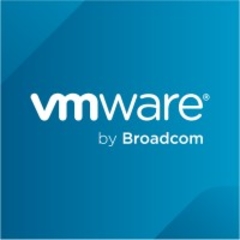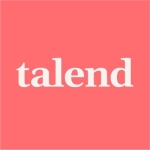
Spring Cloud Data Flow Primary Use Case
LN
Lipika Naik
Senior Software Engineer at QBE Regional Insurance
I used the solution for a payment platform we integrated with our organization. Our company had to use it since we had to integrate it with different payment platforms.
View full review »I did not use the solution in my company, but we did explore it. The tool is used to build the data pipeline. My company uses the tool for one of our in-house projects.
I work with a leading company in the recruitment domain in India. When a job seeker applies for a job, we capture the intent. It has to flow by a certain pipeline to check all the scores and whether the candidate profile matches the job profile. We use our data science algorithm in between, where we take help from a lot of APIs to compute that score.
Then, we dump in different sources and databases to use that data in our analytics. We have built a pipeline that processes every job seeker application on our website. Finally, we pass it to the recruiter via this pipeline with all the scores and everything in place.
Buyer's Guide
Spring Cloud Data Flow
September 2025
Learn what your peers think about Spring Cloud Data Flow. Get advice and tips from experienced pros sharing their opinions. Updated: September 2025.
871,469 professionals have used our research since 2012.
I am a developer using Spring Cloud Dataflow. We primarily use it to convert our applications from monolithic to microservices. The solution is used for scheduling tasks in a specific order and ensuring that microservices are executed in the correct sequence. We leverage it to manage tasks effectively in our microservice architecture.
View full review »JA
Juzer Ali
Software engineer at Codinglama
Spring Cloud Data Flow is used for asynchronous workloads. We are working on streams. For example, a workload is generated at a particular point, and at the source, it gets passed down through a series of processors down to a sink and within that sink, it is persisted in a database.
View full review »We had a project for content management, which involved multiple applications each handling content ingestion, transformation, enrichment, and storage for different customers independently. We wanted to unify this process and reduce operational costs by centralizing a platform to integrate, enrich, and distribute data content. We used it to create a scalable, resilient, and efficient processing pipeline, exploiting the architecture of source, process, and sync, as well as the non-blocking data streams feature.
View full review »JM
Mohammad Masudu Rahaman
Founder at Talkingdeal.com LLC
Mostly the use cases are related to building a data pipeline. There are multiple microservices that are working in the Spring Cloud Data Flow infrastructure, and we are building a data pipeline, mostly a step-by-step process processing data using Kafka. Most of the processor sync and sources are being developed based on the customers' business requirements or use cases.
In the example of the bank we work with, we are actually building a document analysis pipeline. There are some defined sources where we get the documents. Later on, we extract some information united from the summary and we export the data to multiple destinations. We may export it to the POGI Database, and/or to Kafka Topic.
For CoreLogic, we were actually doing data import to elastic. We had a BigQuery data source. And from there we did some transformation of the data then imported it in the elastic clusters. That was the ETL solution.
View full review »SP
Saket Puranik
Senior Platform Associate L2 at a tech services company with 10,001+ employees
In my last project, I worked on Spring Cloud Data Flow (SCDF). We created a stream using this product and we had a Spring Kafka Binder as well. The project included creating a data lake for our clients.
The platform that we created maintained a data lake for an internet banking user and provided an out-of-the-box solution for integration with it. We used SCDF to gather the data, as well as our ETL (extract, transform, and load) pipelines.
View full review »KR
Ken Ramirez
Senior Digital Architect at Kubota USA Inc.
The organization I’m currently consulting for is performing a lift-and-shift, moving its existing software from an on-prem platform and infrastructure to the cloud. They have chosen Azure as their cloud provider. As part of this process, they have orders to move away from expensive, monolithic, proprietary software platforms, and to replace them with open-source, publicly available software technologies.
One area we’ll be replacing is their current middleware software which consists of IBM WebSphere Message Broker. While it is a fine tool for the most part, it’s also bulky and expensive to operate. The final solution we’re working towards will be much more cloud-native, will support scalability, be able to process messages much faster, and consist of several different technologies and vendors (not just a single vendor, as is the case with the current IBM solution). This new middleware platform will consist of: Apache Kafka for the delivery of messages, Spring Cloud Data Flow, and a handful of RESTful APIs.
View full review »Buyer's Guide
Spring Cloud Data Flow
September 2025
Learn what your peers think about Spring Cloud Data Flow. Get advice and tips from experienced pros sharing their opinions. Updated: September 2025.
871,469 professionals have used our research since 2012.















